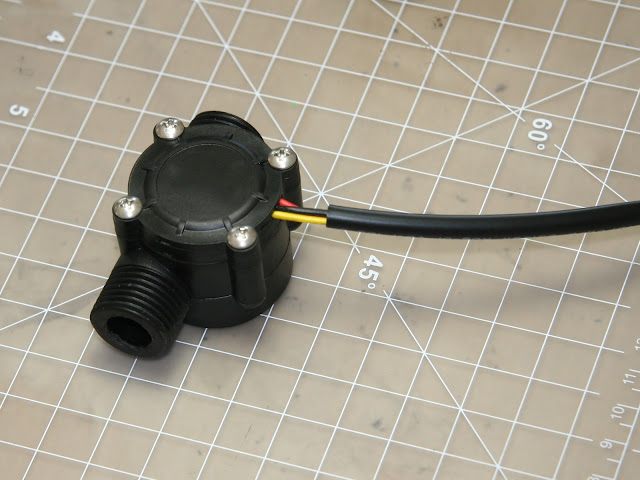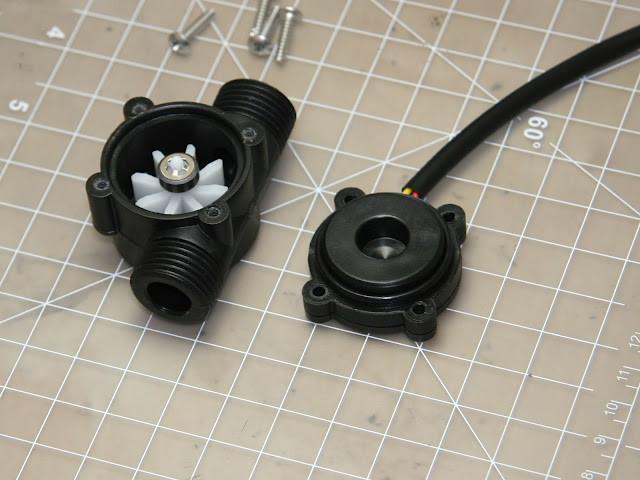I no longer maintain this page due to issues with SVG drawings on Blogspot.
The maintained copy of this page is here:
http://www.prolifictec.com/blog/2015/10/i2c-pull-up-resistors-on-modules-and-breakout-boards.html .
Some of the modules and breakout boards for I2C slave devices contain I2C pull-up resistors. When multiple such modules are connected to the same I2C bus, their pull-up resistors appear in parallel. That results in a stronger effective pull-up resistance, which may prevent communication on the I2C bus.
You have to have pull-ups on the I2C bus.
Somewhere on the I2C bus you have to have pull-ups in order to be able to communicate on the I2C bus. The pull-ups may reside on the microcontroller board, or on the I2C slave device's breakout board, or anywhere else on the I2C bus.Some microcontrollers have internal pull-ups. It's not recommended to use the microcontroller's internal pull-ups for I2C. Still, internal pull-ups is much better than no pull-ups at all.
Watch out, though - you may end-up with pull-up that's too strong.
If pull-up resistors are too strong, that can prevent communication on the I2C bus.Strong pull-up means that the current through the resistor is relatively large. Stronger pull-up translates into smaller resistor value. Weak pull-up translates into a larger resistor value.
(Stiff means the same as strong, when describing pull-up resistors. This terminology is not limited to I2C. It applies to pull-up and pull-down resistors in other types of circuits too.)
Suppose all three boards in this diagram came with pull-up resistors installed. The 2.2 kΩ value is common for an I2C bus running at +5V. Notice however that R2, R4, R6 all are connected between SCL and Vdd. They are in parallel, and they act as one 733 Ω resistor. This combined pull-up is too strong I2C. That can prevent communication on the I2C bus. (Similar for the pull-up resistors on the SDA line.)
If these resistors can spoil the I2C bus, then why are they designed into the breakout boards in the first place? I'm guessing that it must have been a compromise to create an easy out-of-the-box experience. A lot of I2C first-timers don't know that pull-ups are required. Some Arduino boards don't have I2C pull-up resistors nor pads for them (Arduino Uno, Arduino Pro, for example). Some Arduino boards have unpopulated pads for I2C pull-up resistors (Arduino Mini Pro, for example). A breakout board provides the pull-ups, and "it just works". That is, until too many breakout boards are connected in parallel.
Remedies
Of course, as soon as you realize that there are extra pull-up resistors you can simply remove them.Some breakout board suppliers are aware of the possible parallel pull-up scenario. Many of the newer breakout boards have been designed with that in mind.
- Perhaps to partially address this, some of the breakout boards have I2C pull-ups which are half strength. They are weaker than the correct values for the I2C, but stronger than the internal pull-ups of a μC. A typical such value is 4.7 kΩ . This is a compromise. The number of modules that can be connected in parallel without removing resistors is still limited. But a greater number of modules may be connected before combined parallel pull-up becomes too strong.
- On some of the breakout boards, pull-up resistors are connected to Vcc through solder blobs. A solder blob is easy to remove, then pull-up resistors will not affect the I2C bus. (For example, see SJ1 in this SparkFun breakout board.)
- Some breakout boards have unpopulated pads for pull-ups. (For example, see R1 and R2 on this board.)
Related
I2C bus specification and user manual. Anyone working with I2C should at least skim through it.How to deal with multiple pull-up resistors on modules? That forum question was a point of departure for writing this post.
A case when ATmega's internal pull-ups were used for I2C. The oscilloscope screenshots show I2C waveforms with internal pull-ups, and with proper external pull-up resistors.
Forum thread Is there a correct resistance value for I2C pull-up resistors? and application note I2C Bus Pullup Resistor Calculation.
EDN article Design calculations for robust I2C communications. Concise article with diagrams showing I2C physical layer principles of operation.
Effects of varying I2C pull-up resistors. The article shows oscilloscope screenshots of good and bad I2C signals.
Pull-up resistor and pull-down resistor explained













